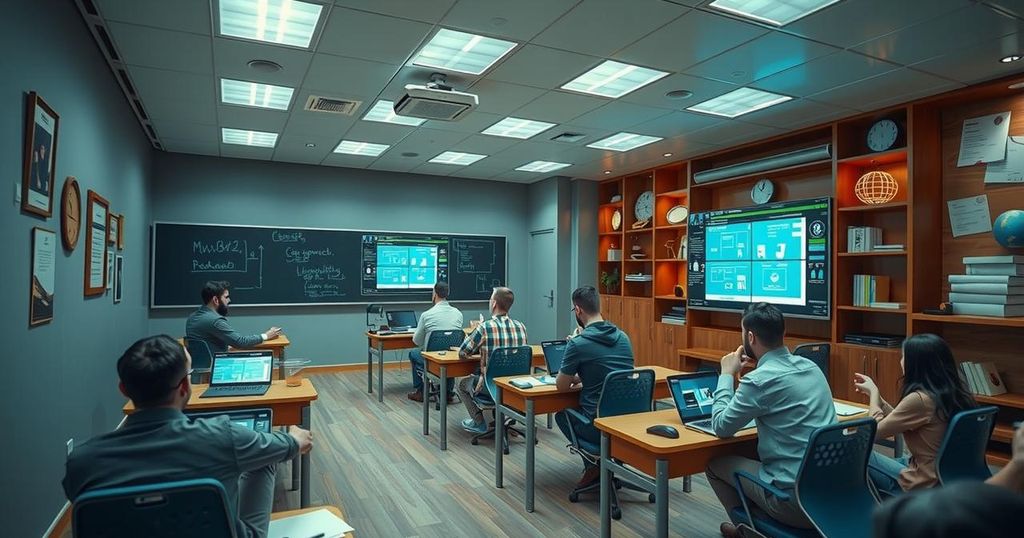Embracing the Educational Revolution: Transformative Technologies in 2024
2024’s educational landscape emphasizes modernizing classrooms with technologies that cater to students’ learning preferences. Cloud-based resources, hybrid classes, and active learning strategies redefine the teaching framework while ensuring flexibility, engagement, and inclusivity. Successful integration requires careful budget consideration and effective classroom management to maximize the benefits of these technological advancements, ultimately fostering an enriching learning environment for every student.
In the vibrant landscape of education, 2024 brings a thrilling revolution where chalkboards and bulky textbooks are swiftly being replaced by sleek tablets and immersive technology. Today’s students, as digital natives, command a classroom repertoire of cutting-edge tools that resonate with their instinctive grasp of technology. This shift towards modern learning tools encourages engagement, interaction, and creativity, transforming the learning experience from passive note-taking to dynamic participation. As schools transition to hybrid models and active learning environments, educators are tasked with exploring innovative technologies that not only capture attention but also enhance knowledge retention, accessibility, and collaboration among students.
Among the most significant trends shaping classrooms are cloud technology and hybrid learning models. Cloud-based resources allow students to access their work anytime and anywhere, reducing dependence on physical hardware, while hybrid classes blend remote and in-person learning, ensuring inclusivity and flexibility. This modern approach promotes a healthy balance, accommodating students’ diverse needs and circumstances, and paving the way for a seamless educational experience. Active learning strategies, employing tools like VR and interactive whiteboards, encourage students to dive deeper into content, engaging them through games, role-playing, and collaborative efforts.
Yet, as thrilling as these advancements are, the backbone of effective classroom technology lies in the equipment used. Interactive screens and smart devices become essential players in the educational arena, as their familiar interfaces mirror everyday technology that students interact with outside school. Effective device management strategies are crucial to keep schools secure in this technological age— monitoring software updates, preventing unauthorized access, and even enabling remote support for any system glitches.
To maximize the impact of these technologies, schools must also consider proper budget allocation for both hardware and software needs. This dual investment is critical for ensuring educators can harness the full potential of digital tools available, creating an enriching environment that ignites student curiosity and fosters critical thinking skills. Embracing this modern paradigm, schools not only prepare their students for a tech-driven world but also revolutionize how education is experienced— one that is bright, imaginative, and uniquely tailored to the needs of each learner.
The wave of technology sweeping through classrooms in 2024 heralds an era where educational tools adapt to the preferences and abilities of today’s learners. With classrooms increasingly adopting digital solutions, the need for effective engagement and personalized instruction grows ever more critical. As educational institutions explore various innovations, the push towards utilizing technologies that resonate with digital natives has become paramount. Understanding the evolution from traditional teaching methods to more engaged, interactive environments provides crucial insight into the future of education. The integration of diverse technologies aims not only to facilitate learning but also to foster collaboration and creativity among students. This context also highlights the importance of adapting existing classroom setups to include not just newer technologies, but also trusted tools that have stood the test of time, ensuring a balance that benefits both educators and learners alike.
In conclusion, 2024 marks a pivotal year where education technology evolves to align with the needs and preferences of a generation of digital natives. Cloud computing, hybrid classes, and active learning strategies reshape classrooms into vibrant, inclusive environments. To reap the full benefits of these advancements, schools must make thoughtful investments in both hardware and effective management tools, ensuring that technology remains a catalyst for engagement, innovation, and success in learning. As classrooms transition towards a more immersive and interactive future, students emerge not only as learners but as creators, thinkers, and leaders poised to thrive in a digital world.
Original Source: www.eschoolnews.com




Post Comment